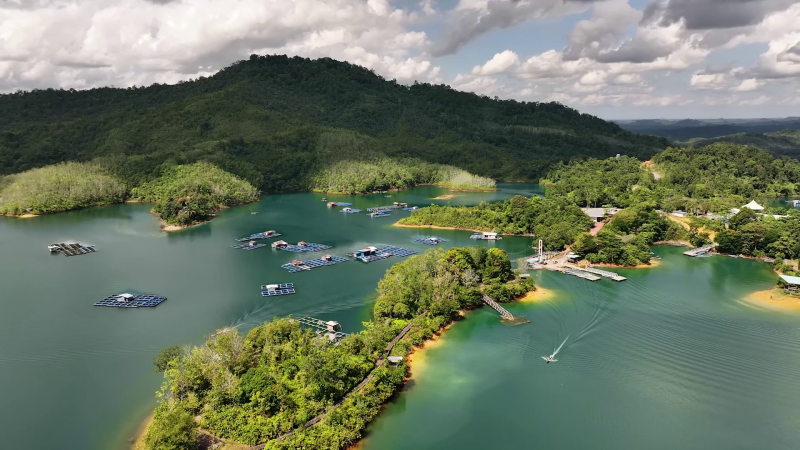Southeast Asia stands at a critical energy crossroads, on track to account for 25% of global energy demand growth between now and 2035.
Surging consumption, intensifying climate risks, and growing concerns over energy security are pushing governments and energy players to rethink the regional energy mix, invest in cleaner alternatives, and establish long-term frameworks for cooperation and resilience.
Regional institutions such as the ASEAN Center for Energy (ACE) coordinate policy, research and technical cooperation among member states to advance the energy transition, and eight ASEAN member countries have already set net-zero emissions goals. However, the region’s collective 15.6% renewable market share falls short of the goal of 23% by 2025, highlighting challenges in financing, grid infrastructure, and policy alignment.
To build on these commitments, Sarawak Energy—Malaysia’s largest renewable energy developer and Sarawak’s primary electricity provider—is convening regional and international stakeholders for the fourth Sustainable and Renewable Energy Forum (SAREF 4.0) in September 2025 to accelerate the region’s clean energy transition through and cross-border collaboration and dialogue with the theme ‘Partnerships for Our Goals – Sustainable Growth & Prosperity for the Region.’
A third of the projected energy demand growth in Southeast Asia is expected to be met by clean energy sources—including hydropower, which accounts for nearly one-sixth of electricity generation in Southeast Asia—highlighting the need for diversification to create a more flexible, secure, and sustainable energy system.
Malaysia is actively pursuing a renewable energy agenda with the goal of increasing its renewable energy capacity to 40% by 2035. As part of this effort, Sarawak Energy continues to invest in large-scale hydropower development and other renewable energy sources such as solar to expand its clean energy portfolio, targeting a total generation capacity of 15 GW by 2035—of which at least 60% is expected to come from renewables.

Contributing to the national agenda, the company is also accelerating its solar deployment, with its first large-scale 50MW floating solar project built on the reservoir of Batang Ai Hydroelectric Plant. Future-facing plans include scaling up both ground-mounted and floating solar installations, targeting a combined capacity of 1.5 GW by 2030.
As renewable infrastructure expands, technological innovation is playing an increasingly central role in shaping the pace and scale of Southeast Asia’s energy transition, and at Sarawak Energy, this transformation is being guided by strategic research and development across core operations and emerging energy solutions.
The company is actively advancing smart grid systems, artificial intelligence, predictive maintenance, and energy storage, all of which are essential to modernizing its electricity network. Through the deployment of smart meters as part of the advanced metering infrastructure (AMI), it enables remote meter reading for accurate billing, faster outage detection, and enhanced power quality monitoring.
The 2024 launch of Malaysia’s first large-scale battery energy storage system (BESS) at the Sejingkat Power Plant in Kuching marked a major step toward strengthening grid resilience and supporting the overall optimization of power generation and grid systems. It also enables the trial of BESS capabilities in facilitating the integration of intermittent renewable energy sources, such as solar, into the grid.
Complementing these technological innovations are nature-based solutions—including mangrove restoration and peatland conservation in Sarawak—which enhance carbon sequestration while helping cities evolve into energy-smart ecosystems that align urban development with environmental stewardship. At the same time, state-wide efforts to convert agricultural waste into biomass and sustainable aviation fuel (SAF) made from microalgae are helping reduce emissions across key industries.

Sarawak’s Post COVID-19 Development Strategy 2030 places clean energy at the center of its ambitions for economic growth and industrial transformation—a local focus that is mirrored by a broader regional vision. State Premier Abang Haji Openg envisions Sarawak as the future ‘battery’ of Southeast Asia, supplying clean energy to neighboring countries via regional grid integration such as the Borneo Grid, which currently links Sarawak to West Kalimantan, with planned interconnections to Sabah and Brunei. One of the most critical platforms enabling the vision of regional energy integration is the ASEAN Power Grid (APG), which aims to connect all ten ASEAN member states by 2045 through shared transmission infrastructure and aligned regulatory frameworks.
Deeper integration holds the promise of unlocking cross-border renewable energy trade, strengthening grid reliability, and advancing regional decarbonization. While challenges such as rising carbon emissions, climate vulnerability, and a substantial investment gap remain, these can be addressed through coordinated regional policies, international collaboration, and strategic investment. With sustained effort and shared commitment, ASEAN can move closer to a more inclusive, secure, and sustainable future for its 700 million people.
The scale is ambitious, but if realized, the rewards could be significant. According to the International Energy Agency, over 85,000 green jobs have already been created since 2019, and a fully realized energy transition could add as many as 66 million new jobs and up to $5.3 trillion to the ASEAN economy by 2050—highlighting a strategic opportunity for sustainable growth and global leadership in the clean energy space.

Through bold partnerships and unified action, the region has the opportunity to turn ambition into implementation and establish itself as a major contributor in the global low-carbon transition. As conversations evolve into tangible commitments, platforms like the Sustainability and Renewable Energy Forum (SAREF 4.0), held in Sarawak on September 3 to 4, 2025, offer a timely pathway toward a cleaner, more connected energy future.
Read more about Sarawak Energy’s commitment to sustainability here

